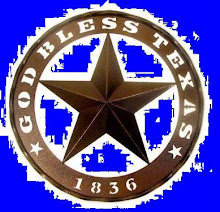My Sophomore year was better than my Freshman year. First of all, Ag was a 2 hour class. We had it 5th and 6th periods … my last two classes of the day. That meant for me that I didn’t have to be back from the school ranch by the end of the 6th period. Most students went to school from 2nd period to 7th period, but some of us went from 1st to 6th. I don’t remember why, but it was normal to start at 2nd period, but if you requested it, you could start at 1st period. I guess that’s why I prefer to go to work early today, and get off earlier in the day.
My Ag project that year was a steer! I had the $50 and I was getting a cow! My first entry in my journal was that I put down a $50 deposit on my steer. Mr. Ralston took us to the bank and we got our loans for the remainder. As I remember, the steer cost $150. The Ag instructors from the three high schools purchased cattle and had them delivered to the school ranch. As an afternoon Ag student, we went to the School ranch when the trucks arrived and helped unload the animals. They were small calves that had just been weaned. We ran the cattle up the chute into the squeeze and put metal tags in their ears. Unlike the sheep, we didn’t stencil their backs. We turned them into the cattle corral and introduced them to hay and grain.
Buying a steer should be like buying a car. You go to the lot, kick the tires, etc, and make your choice. But in high school VoAg, it was drawing a number out of a hat …. literally! All the numbers on the tags we put in the ears were put in a cowboy hat and we got to draw. The number you drew was your steer. I named my steer Mendel, in honor of Uncle Leland, a name he used jokingly. Mendel was a brown and white Hereford.
Now that I had a steer, I had to halter break him. One day in class we made rope halters to use with our steers. That halter was all that we needed to break a steer. It was an easy process to break a steer. First you get the steer up the chute into the squeeze, messy rear end and all, and put the halter on his head. You put on a good pair of gloves and get a good grip on the end of the rope. When you are ready, your buddy opens the door to the squeeze and the steer charges out and you then hang on for dear life! It is a matter of will; and you WILL have a fight on your hands. You weigh 145 pounds and the steer well over 250. You have your end of the rope in your hands and he has his on his head. You are holding your ground, as is he. .The rope can easily slip out of your hands, but it isn’t coming off the steers head!. Then he decides to charge, and you head for the nearest fence! Now you have to go back into the corral and somehow get your end of the rope again. Eventually you do, and after a few hours, he is gentle as a lamb, not as dumb, but as gentle.
Soon all you have to do is go into the corral and the steer comes up to you and you just slip the halter on and walk him like you do your dog. We would walk them around the corral training the steer to be lead as I would have to lead him in the judging arena and auction barn later.
And soon it was fair time again. We loaded the steers into a cattle truck and transported them to the fair grounds. The steers had to always be on a halter once there because the stalls we had were not closed in. So we would give the steer enough slack where he could get his food and water and lay down. Mendel was so gentle that after I put fresh straw in the stall, he would lay down and I could lay up next to him and take a nap and he never moved a muscle. I could actually sit on his shoulders and ride him like a horse, but didn’t do it often.
Bathing a steer is like bathing a dog, only he’s bigger! We actually had animal wash points, not unlike a car wash, but with hoses and brushes, but not a foaming brush! We pampered our steers and bathed them with shampoo that was supposed to leave shiny hair. The biggest problem was the white hair on the steer because living in a dirty corral all his life, the hair wasn’t white. So we used good old Aunt Martha’s Bluing. We would put the bluing on the white hair and scrub and the white became white. One enterprising young fellow decided to bleach his and dribbled bleach on other than white hair, and had a disaster on his hands. Mr. Ralston forbade us from using bleach;, and none of us did.
When the judging came around, ol’ Mendel only got a red ribbon, or second place. It had nothing to do with how he was raised, just the luck of the draw way back with the cowboy hat. Anyway, that red ribbon cost me a kit of cents per pound during the auction. But, I make made enough to pay off my loan at the bank, and not much more.
I will never forget the next time I saw Mendel after the fair. Following the auction we couldn’t do much with the animals because they no longer belonged to us. The next week we had a field trip to the San Jose Slaughter House and it was there I next saw Mendel. He wasn’t his gentle old self. In fact, he was hanging on a hook, all dressed out with his ear tag stabbed into his side so we could find our animals. Most of the animals had a USDA CHOICE or USDA PRIME stamp on their carcass. But Ol’ Mendel was marked USDA GOOD – red ribbon quality thru and thru.
I had two more steers while in high school. In my Junior year I had Stack and my Senior year, Duke. Both were blue ribbon steers and marked USDA PRIME. Don’t remember how much I got in auction, but a lot more than my first one. One thing I did notice, As I grew older I realize that the animals weren’t as important to me as they were when I was a Freshman and Sophomore. The fair was a date place, and the animals were a babe magnet, but I didn’t spend as much time with them as I once did. After all, I did have wheels!








0 Read My Post:
Post a Comment